Staff Augmentation: Everything You Need To Know As Beginner
Explore the basic concept of staff augmentation and why it’s attractive to growing businesses. Also learn when it’s good for your business and how you can get the most out of this hiring model.
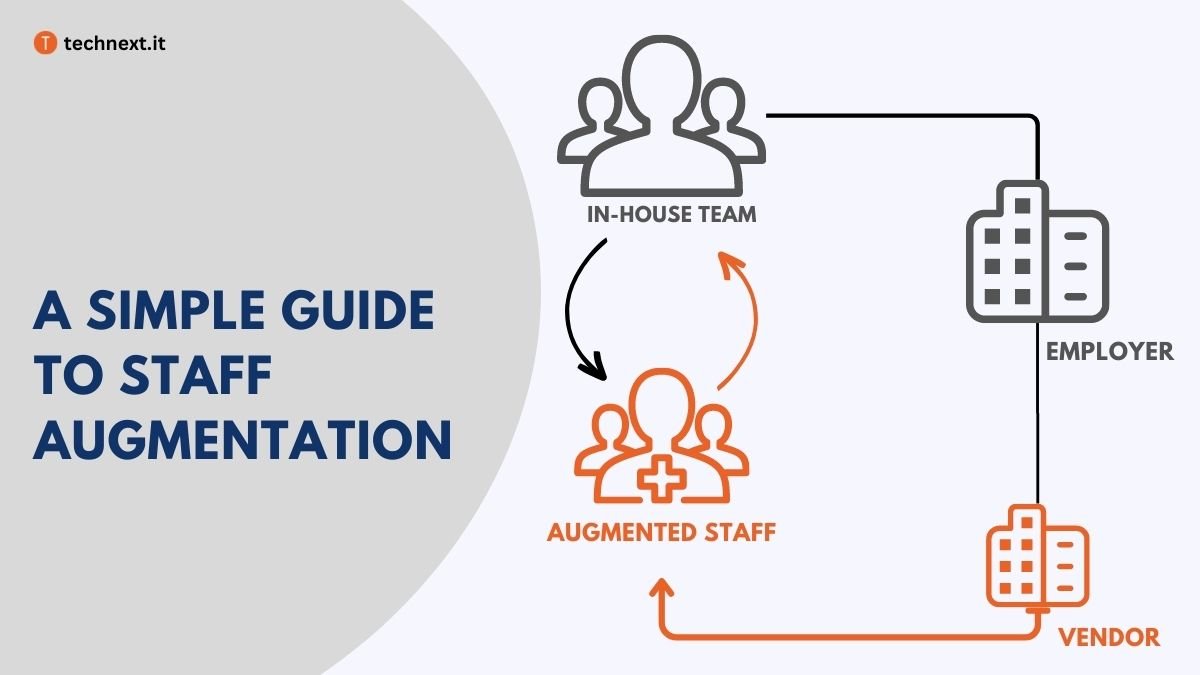
We all know that the ever-increasing cost and regulations of in-house hiring have created pressure on business leaders, particularly when they require specific skills for a short period or need to expand quickly. The on-demand hiring models like staff augmentation and outsourcing software development has given the founders a breathing space.
Even big names such as PepsiCo, Dell, and Reddit have adopted staff augmentation to swiftly and flexibly recruit software developers for their short-term or specialized needs. This hiring model is also gaining popularity among startups as they prioritize budget and time.
You may be wondering why not every company adopts the staff augmentation model if it’s so beneficial. What are the limitations? Is it a suitable model for my business? And how can I implement this hiring model to scale quickly and effectively? Yes, These are essential questions to consider before going for staff augmentation, and in this article, I will answer them so that you can make informed decisions.
What is Staff Augmentation?
Before we dive deep into this topic, let’s clarify what staff augmentation actually is.
Simply put, staff augmentation is an outsourcing or hiring model in which you can bring additional workforce from different companies and integrate with our existing team without the hassle of recruitment.
I have a story to share with you about X Corp (alias) that serves as a good example. X Corp created an order management application designed specifically for restaurant owners. They have a team of skilled backend and front-end developers who use Laravel and Vue js to develop their software.
At one point, their customers requested a new module that needed to be built using React. However, at that time, No one of their team had experience with React.
To address this, the CTO of X Corp reached out to Technext. After conducting a thorough screening and interviewing process, X Corp hired two React developers who worked remotely from the Technext office in Bangladesh. These developers worked alongside X Corp’s in-house team to complete the project successfully.

3 Types of Staff Augmentation to Choose From
Staff augmentation is categorized into three types: commodity, skill-based, and highly skilled. Let’s discuss each type bit more.
1. Commodity Staff Augmentation
Commodity staff augmentation refers to hiring employees with basic, entry-level skills. These employees are typically easy to find, and the associated hiring costs are lower. For example, commodity staff augmentation is mainly practiced in areas like customer service, data entry, and administrative assistance.
Therefore, this type of staff augmentation may involve basic it support, manual labor, and administrative support, among other things.
2. Skilled Staff Augmentation
It’s a hiring process where a skilled staff augmentation service provider offers a team of expert professionals in certain areas with special skills to meet the client’s specific needs. The skilled staff augmentation work includes typing or data entry for clerical work, basic copywriting, transcription, and many more.
For example, suppose you need web developers, graphic designers, and software engineers particularly. In that case, you can easily onboard developers with those particular skill sets through staff augmentation providers.
3. Highly Skilled Staff Augmentation
We know how much its difficult to find highly skilled staff for any large-scale projects. But through an IT staff augmentation provider, you can find a team of highly experienced staff. Those teams are made up with highly experienced professionals with specific skills and abilities who can easily carry out your robust and large-scale projects. Also, they have the skill to work agilely, flexibly and deliver high-quality work to your organization. Besides that, highly skilled staff augmentation examples include hiring data scientists, machine learning engineers, AI developers, product designers, content designers, etc.
Finally, it can be said that the last type highly skilled staff augmentation process, will help you to bring additional project value and guarantees high process efficiency to your organization.
Why Businesses are Choosing Staff Augmentation over Traditional Hiring
As businesses grow and evolve, their IT demands become more complex. Hiring new full-time employees to keep up with these demands can be a costly and time-consuming process. But staff augmentation can be the best solution to mitigate this problem because, through staff augmentation, you can hire highly-skilled professionals who can supplement your existing team on a short or long-term basis.
Scalability and Flexibility
When your business starts growing, there are shifts in the company’s performance companies find it challenging to react well. In those cases, staff augmentation is a solution that is fundamentally flexible and, as such, ideal for companies that experience regular shifts in demand. In the staff augmentation model, there is all flexibility; you can recruit employees as per your need and dismiss them when your need is over. Besides that, temporary staffing gives the flexibility to deal with projects of any size. It also means that you can scale up without sacrificing the work’s quality.

Highlight: No direct contact with the employee themselves, you can increase and decrease team size anytime.
Consider, for example, you own a small e-commerce business that specializes in selling handmade jewelry. One day, a well-known celebrity is seen wearing one of your necklaces in public, and suddenly, your website traffic and sales skyrocket overnight. Your team is not prepared for this kind of influx, and you need to quickly increase your capacity to meet customer demand and continue to provide a quality customer experience.
Reduced Overhead Costs
Hiring new full-time employees can be a costly process. There are costs associated with hiring process training, benefits, salaries, and other forms of compensation. By contrast, IT staff augmentation helps IT enterprises to reduce costs at various levels. As you are hiring augmented workers for a particular period, you need to pay them only for the time they work. Plus, you can also reduce overhead costs such as recruiting, training, taxes, office space, equipment, and other expenses.

Highlight: Zero setup cost, tax and training. Plus what you can from growing markets like Bangladesh where the cost of hiring is less than 40% of the US.
Staff augmentation helps IT enterprises to cut costs at various levels. Sometimes you need a developer on a short-term basis, perhaps for weeks or months. In such case scenarios, hiring temporary staff via staff augmentation is more cost-effective than hiring full-time employees. Because temporary workers are typically paid on an hourly or project basis, so the company only pays for the required work.
Also, staff augmentation gives you quality talent with less money spent on recruitment, overheads, and employee expenses. Hiring an augmented person on a short-term basis can save huge human resource expenses in recruiting, interviewing, and training staff. And since professionals have enough expertise in your required sector, they don’t require many training sessions. Another s expense saved is the business overheads like office space, tools, and other facilities.
Access to Specialized Skills and Expertise
Staff augmentation can provide companies with access to specialized skills and expertise that they may not have in-house. When companies have complex projects or tasks requiring specific expertise, finding and hiring a full-time employee with the necessary skills can be difficult and expensive. However, with staff augmentation, companies can bring in temporary workers with specialized skills and experience for the duration of the project or task.
For example, a company may need to develop a new feature of your software application, but they do not have the in-house expertise to do so. Instead of hiring a full-time employee with the necessary skills, the company can use staff augmentation to bring in a temporary worker with expertise in software development. This temporary worker can work on the project for the duration of the development process and then move on to another project when the work is completed.
Improved Time-to-Market
Unlike traditional hiring, you don’t need to conduct rigorous screening and interviewing in the staff augmentation model. The staff augmentation service companies already did that for you.
According to a research by Linkedin, you may need 49 days to hire in the engineering sector. On the other hand, you can hire a vetted developer from companies like Technext in just 7 days. Ultimately, that allows you to develop your product quickly and get it to market even faster.
When is Staff Augmentation Right for You?
It’s time we mention the elephant in the room, “Is staffing right for you”? If so, when does it offer the best value, and when does it not?

Highlight: if your organization has temporary needs to fulfill its requirements, wants to grow its business fast, and reduces its costs in those scenarios, staff augmentation is absolutely right for you.
When you or someone in your team has development experience
If you want to get the job done right, you or someone on your team must be qualified enough to screen the augmented staff for talent and capabilities, whether they are capable enough to do the assigned projects. This is the first requirement of choosing the staff augmentation model of hiring.
If there is a skill gap or a need for specialized expertise
If your team lacks specific skills or experience, staff augmentation is a great way to fill those gaps. By augmenting your staff with professionals who possess the specific knowledge and expertise required for any specific project or technology, you can ensure success.
For example, let’s say you have dedicated teams for both back-end and front-end development, and you’ve built a web app. Now you need a deployment engineer to deploy the web application. In this case, you can hire an implementation engineer from a staff augmentation service provider.

Pro Tip: Make a list of the skills you need. Access the short- and long-term usability of these skills, and then conduct a cost-benefit analysis of hiring in-house. If the costs outweigh the benefits, go for the staff augmentation model.
You need to scale fast
In the startup industry, companies frequently need to expand rapidly to keep up with increased demand. Occasionally, they may even need to completely revamp their project, which requires a large workforce within short notice. In such cases, you may augment staff from another company.
Need to work on third-party solutions
Occasionally, it may be necessary to incorporate third-party solutions into your project. This may involve utilizing an existing white-label solution or template to create your own software. In such cases, you may augment staff from a company that is familiar with that particular solution.
Take the popular Falcon web app template as an example. Many companies buy this template and augment developers from Technext to modify it or create software based on it. Since Falcon is built by a Technext development team, they can modify it faster and more efficiently than others.
Need to test the product idea before the launch
Staff augmentation may be a suitable option if you need to test your product idea before the official launch. It allows you to bring in experienced QA tasters who can help you with a comprehensive testing strategy. On top of that, you will have fresh eyes to test the product you are building and that may act as an Exploratory test.
Don’t have the budget to hire in-house
Last but not least, you can choose this hiring model when you don’t have enough budget to hire a developer in-house. It’s actually one of the key reasons companies turn to staff augmentation. Since this contracting model allows you to contract with offshore vendors, you can easily hire vetted developers for a fraction of the cost.
How to Do Staff Augmentation and Get the Most Out of It
The concept of staff augmentation appears simple since it involves a B2B service, and the vendor company is responsible for providing the best possible service. Yet, you may end up paying more than you should if you do not prepare yourself and take your steps carefully. So, let’s discuss the best practices of this hiring model in a step-by-step manner.
First, identify your needs, and skill gaps
Before starting staff augmentation, it’s important to carefully review and revise your project requirements. Consider the necessary technologies, resources, and expertise required to bring your project to fruition.
Next, assess your current resources and the skill levels of your team. Determine whether they can easily meet your requirements and identify any skill gaps that exist. If there are skill gaps, then assess how many experts you need.
This thorough review will allow you to know exactly what you need and what you do next.
Carefully select a staffing partner
Choosing the appropriate partner is crucial for achieving a fruitful staff augmentation service. Make sure the partner you select complements your existing team. Essentially, their strengths should make up for your weaknesses.
Before finalizing who you are going to work with, review their portfolio, and talk to their old clients so that you get a clear understanding of the vendor company and their work ethics.
It’s a common mistake for companies to prioritize large staffing providers over smaller ones. However, having more people does not always guarantee better quality. It is unfortunate that some large corporations do not prioritize the well-being of their employees, resulting in poor job performance. To avoid this, be sure to keep an eye on the following factors:
- Evaluate their talent selection process. Ask them how they find and groom their developers or designers.
- Take a look at employee turnover. Selecting a staffing provider with higher employee turnover means you won’t get the same person for the long term. And that can affect your project.
- Consider how well the partner’s values and work culture aligns with your organization.
- Evaluate their communication. Keep in mind that effective communication involves not only language proficiency, but also the ability to comprehend and execute complex concepts.
Evaluate multiple potential partners before choosing one. Ask for free trials so that you can get a real-life experience of working with them.

Pro Tip: Don’t put all your eggs in one basket. Choose multiple partners and evaluate them. Establish a lasting partnership with the one who offers the most value.
Handpick your talent
After choosing your staffing partner, you will be presented with their talent inventory. Don’t just believe what the provider says; take the time to evaluate each developer before selecting them. Take a look at their personal portfolio, skill set, communication skills, and even plans for the coming months.

Pro Tip: Find a delicate problem of your project. Give them the problem to solve and see how well they understand and solve your problem.
Negotiate And Sign The Contract
After you’ve chosen your talent and staffing partner, the next thing to do is negotiate, prepare, and sign a contract. In most cases, the vendor creates documentation so you don’t have to think about it too much. However, you should go through the entire contract carefully before signing it.
Consider things like payment terms, intellectual property (IP) rights, confidentiality, and termination clauses. Make sure the contract is clearly written and specifies the responsibilities and expectations of each party.
Once negotiations and paperworks are complete, sign the agreement and enter into a win-win partnership.

Pro Tip: To safeguard your interests and ensure the legality of the contract, consider seeking legal advice before signing it.
Make Your augmented staff feel evaluated and part of your vision
It is common among companies to treat augmented employees differently than in-house ones. Mainly because they see augmented employees as a resource from staffing providers, not their own. Therefore, the engineers don’t feel connected to the company.
Make them feel connected with your mission, vision, and culture. Almost all businesses have their own culture. Discuss your company’s value with them. Suppose you are arranging a team party; add them via video call. These tasks won’t require much time, but they will make your augmented employees feel like a valuable part of the team.

Pro Tip: You can send your branded t-shirts or swags to your augmented staff. It will make them feel part of your company and increase their loyalty.
Another big thing is appreciation. Let them know how they are contributing to the overall growth of your company. It will boost their engagement, and you’ll surely get better quality delivery.
Finalize communication and project management frameworks and tools
As I mentioned earlier, we often mistake fruitful communication for language proficiency. In reality, communication is much more than just conversation. Meetings, idea sharing, and learning sessions are all part of effective communication.
Finalize your meeting baselines (how often you will hold meetings, what are medium you will use, the basic framework of engagement, etc). Arrange learning and idea-sharing sessions so that they keep up with your whole team (in-house and outsourced).
Also, fix how you will manage the project and what project management tool you will use. How often should they provide updates on their work etc.
Continuously evaluate, provide feedback and improve
Similar to hiring employees in-house, staff augmentation requires ongoing development. So, regularly evaluate the performance and progress of your augmented staff. More importantly, provide constructive feedback on their current state so that they can improve themselves.
While it may not appear as vital as your in-house team, improving the overall quality of your augmented staff can often offer significant benefits to your business. Moreover, it will foster a culture of recognition and growth. This ultimately leads to a successful collaboration with the vendor and staff.
Get a Free Staff Augmentation Consultation
If you’re considering adopting a staff augmentation model to scale your team but are unsure whether to hire in-house or hire augmented staff or outsource project development, you can book a free consultation with Reza. Reza has assisted countless companies in hiring developers and designers while also saving costs and avoiding the hassle of hiring on their own.

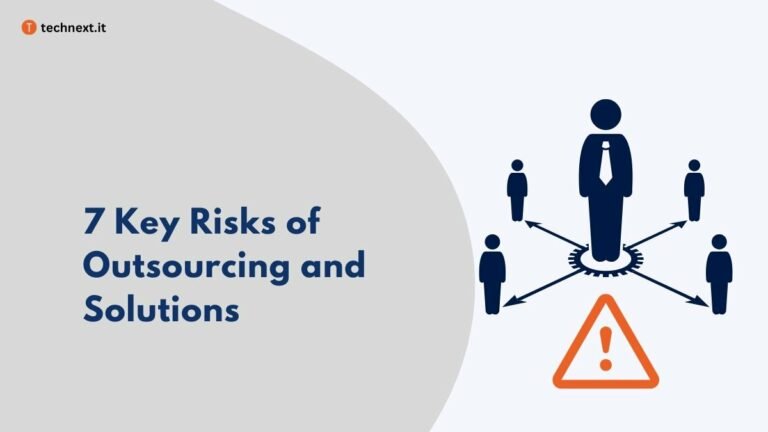
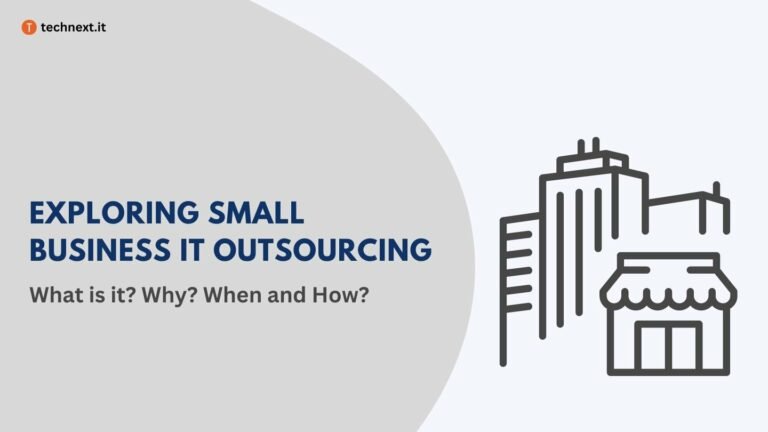

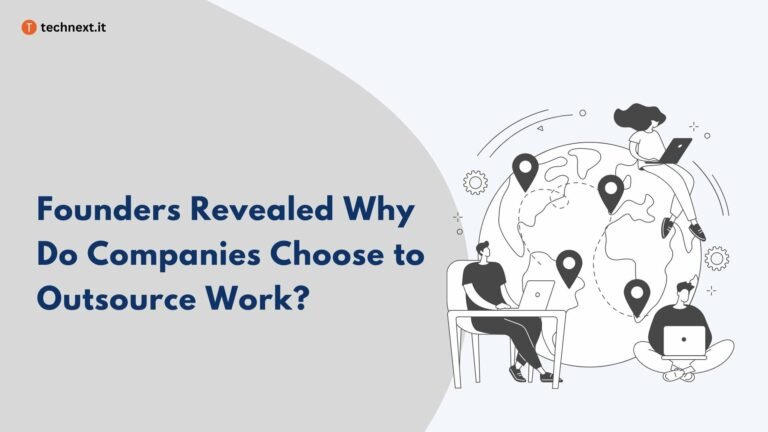
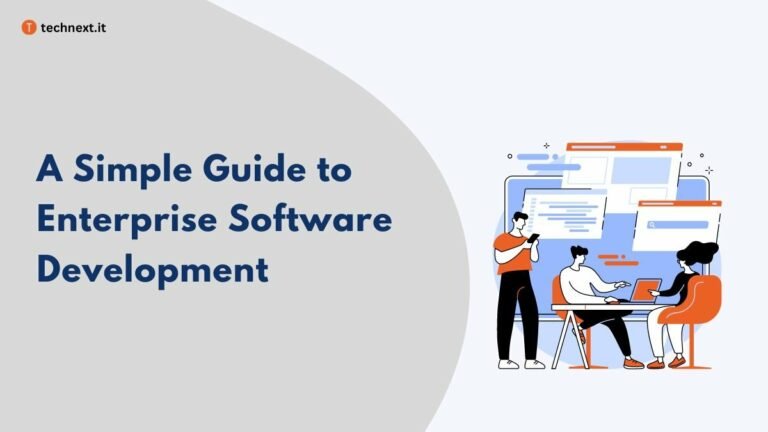
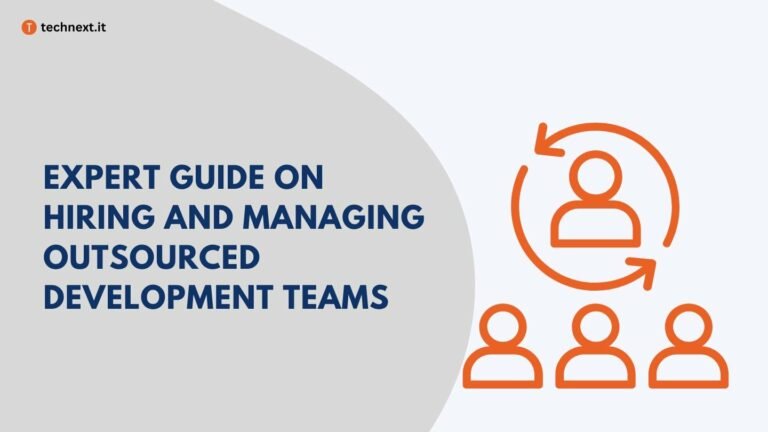
One Comment